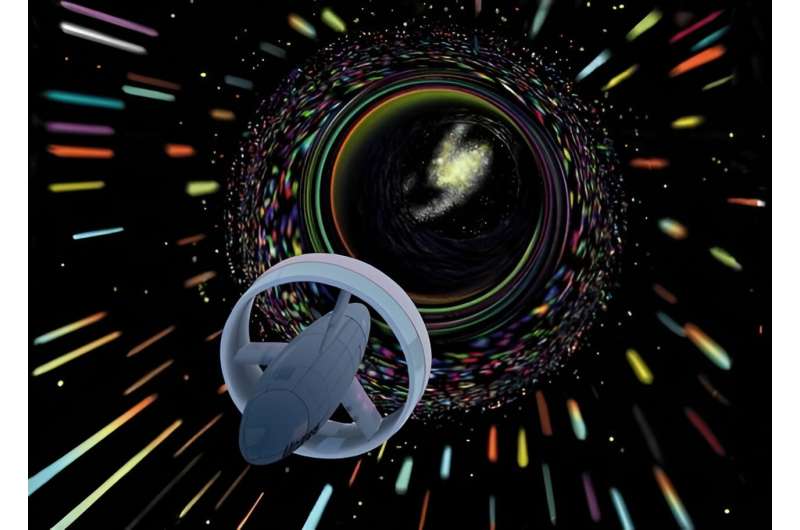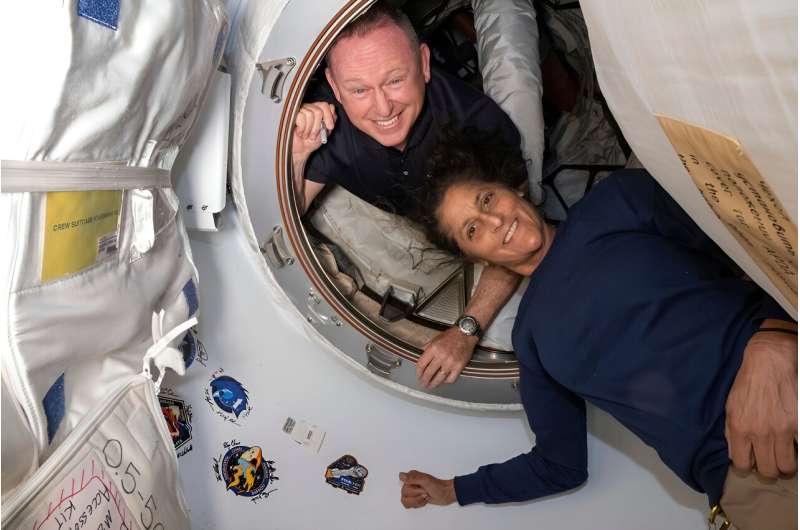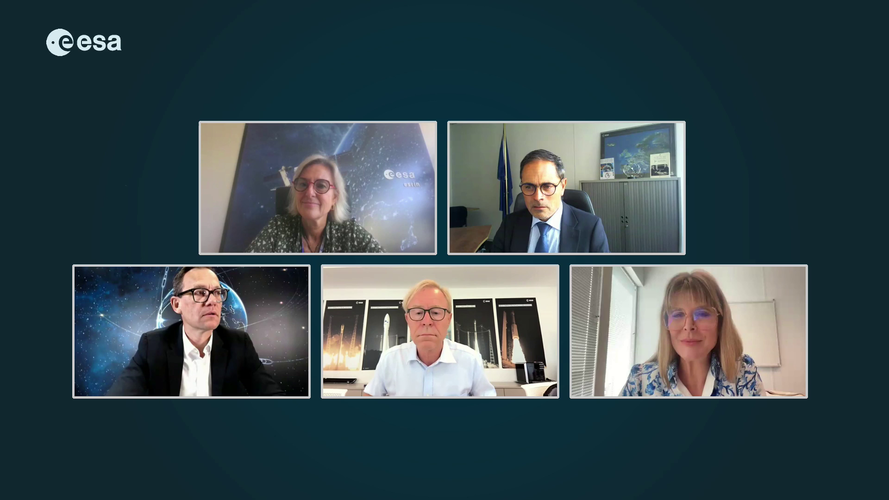Raytheon wins $51.7 million contract for military satcom antennas
Thursday, 29 August 2024 21:32

Verizon to bring satellite connectivity to Android phones this fall
Thursday, 29 August 2024 20:10

Solar Orbiter shows how solar wind gets a magnetic push
Thursday, 29 August 2024 17:00
ESA’s Solar Orbiter spacecraft has provided crucial data to answer the decades-long question of where the energy comes from to heat and accelerate the solar wind. Working in tandem with NASA’s Parker Solar Probe, Solar Orbiter reveals that the energy needed to help power this outflow is coming from large fluctuations in the Sun’s magnetic field.
Firefly Aerospace names space industry veteran Jason Kim as new CEO
Thursday, 29 August 2024 16:47

Firefly names space industry veteran Jason Kim as new CEO
Thursday, 29 August 2024 16:47

Blue Origin flies NASA-funded scientist and space tourists on New Shepard suborbital flight
Thursday, 29 August 2024 16:39

Blue Origin completes latest space tourism flight successfully
Thursday, 29 August 2024 15:12
Blue Origin flew its latest group of six thrill-seekers to the edge of space and back again Thursday, including the youngest-ever woman to complete the feat.
Mission NS-26 marked the eighth human spaceflight for the company, founded by Jeff Bezos, as it presses ahead in the emerging suborbital tourism market.
Karsen Kitchen, a 21-year-old senior at the University of North Carolina at Chapel Hill, became the youngest woman ever to cross the Karman Line, the internationally recognized boundary marking the edge of space, 100 kilometers (62 miles) above the Earth's surface.
Blue Origin's small New Shepard rocket blasted off at 8:00 am local time (1300 GMT) from the company's Launch Site One base in west Texas.
After liftoff, the sleek and spacious capsule separated from its booster, which boasts zero carbon emissions, before the rocket performed a precise vertical landing.
International consortium with NASA reveals hidden impact of spaceflight on gut health
Thursday, 29 August 2024 14:00
Scientists have uncovered how spaceflight profoundly alters the gut microbiome, revealing previously unknown effects on host physiology that could shape the future of long-duration space missions.
Led by University College Dublin (UCD) and McGill University, Canada, in collaboration with NASA and an international consortium, the research offers the most detailed profile to date of how space travel impacts the gut microbes we carry into space.
Published in npj Biofilms and Microbiomes, the study used advanced genetic technologies to examine changes in the gut microbiome, colons, and livers of mice aboard the International Space Station (ISS) over three months.
The findings reveal significant shifts in specific bacteria and corresponding changes in host gene expression associated with immune and metabolic dysfunction commonly observed in space, offering new insights into how these changes may affect astronaut physiology during extended missions.
Dr. Emmanuel Gonzalez, McGill University, and first author of the study, said, "Spaceflight extensively alters astronaut physiology, yet many underlying factors remain a mystery.
What if you flew your warp drive spaceship into a black hole?
Thursday, 29 August 2024 13:34
Warp drives have a long history of not existing, despite their ubiquitous presence in science fiction. Writer John Campbell first introduced the idea in a science fiction novel called Islands of Space.
These days, thanks to Star Trek in particular, the term is very familiar. It's almost a generic reference for superliminal travel through hyperspace. Whether or not warp drive will ever exist is a physics problem that researchers are still trying to solve, but for now, it's theoretical.
Recently, two researchers looked at what would happen if a ship with warp drive tried to get into a black hole. The result is an interesting thought experiment. It might not lead to starship-sized warp drives but might allow scientists to create smaller versions someday.
Astronauts stranded in space: Unexpected eight-month stay highlights risks of space exploration
Thursday, 29 August 2024 13:31
Astronauts Butch Wilmore and Suni Williams took off for the International Space Station in June. The test flight aboard Boeing's Starliner was supposed to last a week, but they have yet to return.
Helium leaks and issues with the control thrusters were discovered with the spacecraft, making a safe return to Earth impossible, according to NASA.
Instead, the pair will return to Earth with the crew of an upcoming SpaceX mission, which means they will not be back until February.
But a weeklong trip turning into an eight-month journey is par for the course when it comes to space exploration, Northeastern University experts say.
New Horizons spacecraft measurements shed light on the darkness of the universe
Thursday, 29 August 2024 13:16
Just how dark is deep space? Astronomers may have finally answered this long-standing question by tapping into the capabilities and distant position of NASA's New Horizons spacecraft, by making the most precise, direct measurements ever of the total amount of light the universe generates.
More than 18 years after launch and nine years after its historic exploration of Pluto, New Horizons is more than 5.4 billion miles (7.3 billion kilometers) from Earth, in a region of the solar system far enough from the sun to offer the darkest skies available to any existing telescope—and to provide a unique vantage point from which to measure the overall brightness of the distant universe.
Shikha Ganguly, L3Harris Technologies – Leading Women in Space
Thursday, 29 August 2024 11:59

Galactic Energy launches six satellites with third sea launch
Thursday, 29 August 2024 09:38

Sentinel-2C pre-launch media briefing
Thursday, 29 August 2024 09:00 Video:
00:52:00
Video:
00:52:00
The Copernicus Sentinel-2C satellite is set for liftoff on 4 September on the last Vega rocket from Europe’s Spaceport in Kourou, French Guiana.
This recording is of a media briefing held on 29 August 2024 to offer journalists the possibility to learn more about the Sentinel-2 mission and the last flight of Vega, Europe’s nimble rocket specialising in launching small scientific and Earth observation spacecraft such as to sun-synchronous polar orbits, following the Sun.
The Sentinel-2 mission is based on a constellation of two identical satellites, Sentinel-2A and Sentinel-2B, flying in the same orbit but 180°
FAA pauses Falcon 9 launches to investigate failed booster landing
Thursday, 29 August 2024 01:34

